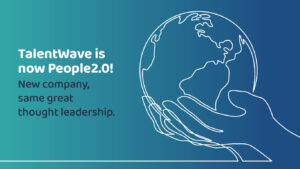As more companies struggle with the challenges of talent scarcity, a new strategy of total talent management has emerged as a viable solution—ensuring the right workers are available, in the right place, and at the right time. This strategy strives to balance traditional employees with independent workers under a holistic planning framework. Many early-adopter organizations are learning they must become a “client of choice” in order to attract and retain the flexible workers they need. Procurement and Human Resources organizations also have a critical role to play in order to achieve a successful outcome in this increasingly competitive environment.
How Did We Get Here?
Over the past decade, a complex and interrelated web of trends have collided to create a perfect storm which is impacting organizations across all industry sectors and regions, particularly those that rely on skilled knowledge workers to get vital work done.
Significant demographic trends have impacted the workforce supply:
- Baby Boomers – the second largest and best educated generation in the history of the United States is now beginning to exit the workforce in large numbers. However, due to boredom or the desire for more income many still want to work—they just want to do it on their terms!
- Post-Boomer generations – Generation X and Millennials (the largest generation just entering the work force) view work, and careers, very differently than the Baby Boomers.
- “Non-traditional” households – as defined by the U.S. Bureau of Labor Statistics, are now the majority (83%).
- Unemployment is near historic lows for college graduates, particularly those with professional or STEM degrees.
- Life expectancy continues to get longer, meaning we’ll need more income in old age, especially as the cost of living also increases.
- Birth rates are decreasing across the globe, limiting the long-term supply of the workforce.
Firmographic trends have changed the workplace environment and the demand side of the equation for talent:
- Service economy – the majority of the U.S. economy is now services-based, as opposed to manufacturing. Brainpower has literally become more valuable than bricks and mortar!
- Economic conditions – economic uncertainty and rapid fluctuations are the new normal. Companies now value flexibility as a strategic planning imperative, particularly with their human capital.
- Change and complexity – driven by technology innovation, we’re seeing unprecedented business disruption.
- Outsourcing and offshoring – as wages begin to normalize across the globe, the significant cost savings once associated with sending work overseas are now more difficult find.
- Corporate conservatism – as a result of all these rapidly evolving trends, organizations are forced to be more conservative when it comes to adding overhead.
The above evolutionary factors have in turn created a complete psychographic revolution within the workforce. The changing nature of work, and the resulting “new” workforce are fundamentally different than anything we’ve ever seen before:
- Diminished loyalty – a bi-directional decrease in loyalty, meaning companies can no longer promise workers employment for life; while more workers want the variety, flexibility and control that come with being independent.
- Changing nature of work – work itself has become more deliverables-based or “projectized”, versus a role that is filled to complete a process or task.
- Career definition – a professional’s career is now commonly viewed as a successive series of engagements, or “tours of duty”, versus one job held for many years.
Talent Scarcity Creates a New Reality in Today’s Market
As evidenced above, the talent equation has fundamentally shifted. Today’s knowledge workers are in more control than ever before, and they have options. Many of them want to be independent, free from the shackles of traditional employment and also free from any agency representation.
For companies, those with the best talent are in a much better position to dominate their markets. This represents new, and uncharted, territory for organizations that must attract and retain flexible talent.
Procurement organizations, in particular, have historically played a significant role in sourcing and managing contingent labor suppliers and programs. Due to its large volume, complex agency supply chain, and significant cost impacts, the management of the temporary labor segment was often assigned to Procurement. Most Human Resources groups were happy to abdicate oversight of this segment of the workforce so that they could focus on recruiting, hiring and managing regular employees of the company. Human capital management, led by HR, emerged as the management framework for doing this.
Under the umbrella of total talent management, Procurement must now begin to partner with their Human Resources colleagues to create a framework for managing the organization’s entire talent chain, and tackling talent scarcity. To do this they must also create a new, singular, company recruiting brand. In times past, the focus was on becoming the “employer of choice”. In the new era of talent scarcity, it has morphed to becoming a client of choice!
Are you a procurement or HR professional dealing with talent scarcity in your organization? Learn more about the steps progressive organizations are taking to become a client of choice for independent workers. Check out this white paper



